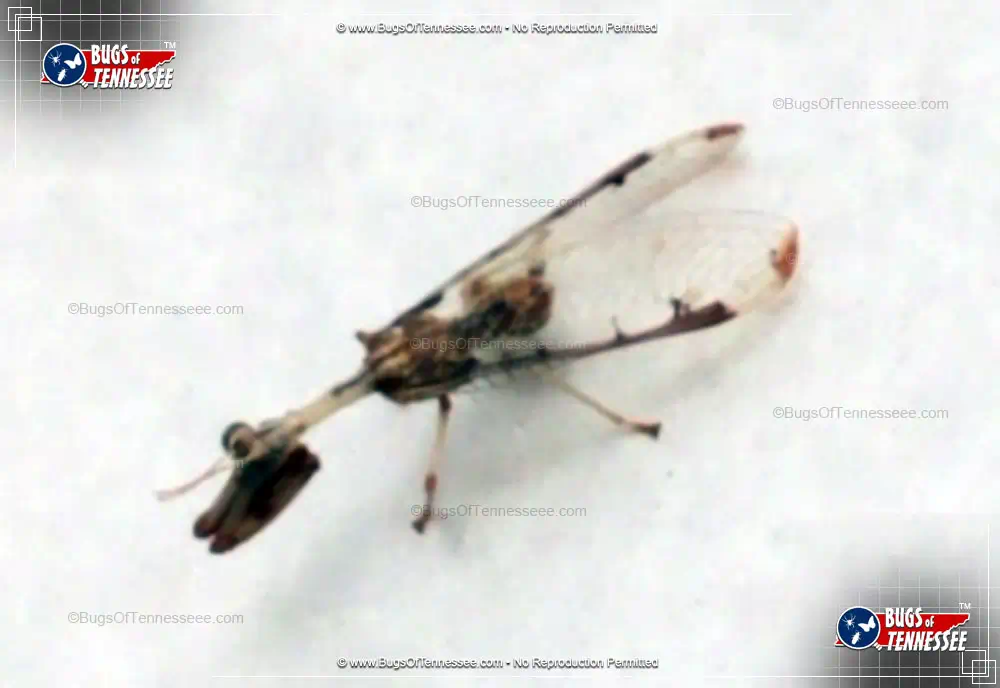Insect Order (Neuroptera)
NEUROPTERA
The order Neuroptera includes only around 335 recognized species in North America. The mouths of these insects are designed for chewing and vision from the compound eyes is thought to be good. Body shapes are typically long and slender and wings transparent. They can be found most anywhere outdoors, from forests to deserts, and feed on a diet of pollen / nectar and other insects. Larvae can be found on branches of trees or near the roots of plants on the ground. The Hemiptera order covers Antlions, Lacewings, Mantidflies, and Owlflies. Antlions, in particular, can be sometimes mistaken for Dragonflies.
Taxonomy
The Taxonomic Breakdown is the scientific way to categorize a partocular insect species from its largest group (Animalia) to its smallest (variable). The Genus and Species categorizations taken together make up the species' scientific name shown above, in this case Dicromantispa interrupta.
Kingdom: Animalia
Phylum: Arthropoda
Class: Anthropoda
Order: Neuroptera
Family: Mantispidae
Genus: Dicromantispa
Species: interrupta
Characteristics
Abdomen: Has a noticeably large / oversized abdomen.
Outdoors: Typically found across the great outdoors.
Six-Legged: Six legs are common to this insect.
Winged: Has wings to hop or fly over distance.
Description
The Four-spotted Mantidfly has been identified by site users by the following descriptors:
large outdoors arms winged wings flying transparent neck six-legged abdomen brown black red maroon
Sighting Guide
The general likelihood of encountering this insect based on a given month of the year in the state of Tennessee. Generally, the best sighting months are June through August with peak occurring in July.
Size
Below is a representation of the 'smallest-small' and 'largest-large' sizes commonly associated with the Four-spotted Mantidfly. Due to monitor differences, sizes may not be exact on your particular screen. Conversions to millimeters are provided for convenience.
Lowest-Low:
1.18 inches
(30 mm)
Highest-High:
1.38 inches
(35 mm)
Identifying Colors
Below you will find the colors most commonly associated with the Four-spotted Mantidfly. Both Primary and Secondary colors are represented in the showcase. Due to monitor differences, colors may not be exact representations.
Tennessee County Reach
The Four-spotted Mantidfly can be found in the following Tennessee counties:
Anderson; Bedford; Benton; Bledsoe; Blount; Bradley; Campbell; Cannon; Carroll; Carter; Cheatham; Chester; Claiborne; Clay; Cocke; Coffee; Crockett; Cumberland; Davidson; De Kalb; Decatur; Dickson; Dyer; Fayette; Fentress; Franklin; Gibson; Giles; Grainger; Greene; Grundy; Hamblen; Hamilton; Hancock; Hardeman; Hardin; Hawkins; Haywood; Henderson; Henry; Hickman; Houston; Humphreys; Jackson; Jefferson; Johnson; Knox; Lake; Lauderdale; Lawrence; Lewis; Lincoln; Loudon; Macon; Madison; Marion; Marshall; Maury; McMinn; McNairy; Meigs; Monroe; Montgomery; Moore; Morgan; Obion; Overton; Perry; Pickett; Polk; Putnam; Rhea; Roane; Robertson; Rutherford; Scott; Sequatchie; Sevier; Shelby; Smith; Stewart; Sullivan; Sumner; Tipton; Trousdale; Unicoi; Union; Van Buren; Warren; Washington; Wayne; Weakley; White; Williamson; Wilson
Four-spotted Mantidfly Picture (1)
1 of 1

Close-up detailed view of a Four-spotted Mantidfly flying insect.; Credit: Chip B. of Boerne, TX, USA.
This image is original to
www.InsectIdentification.org; Used with Permission.
